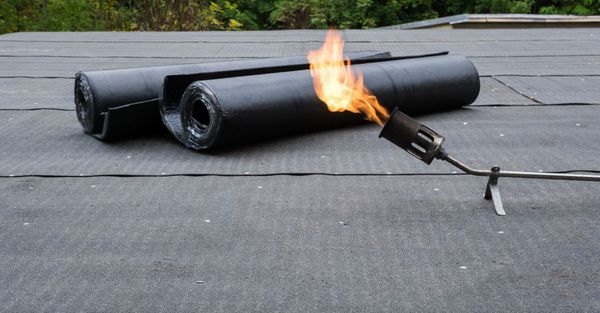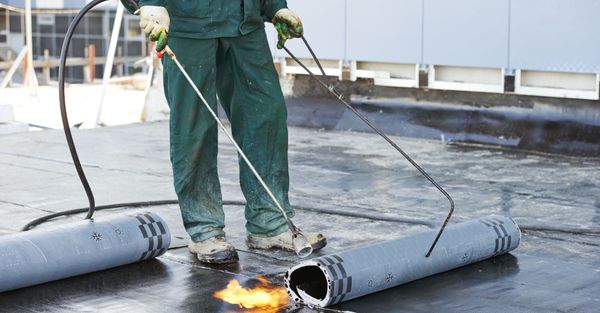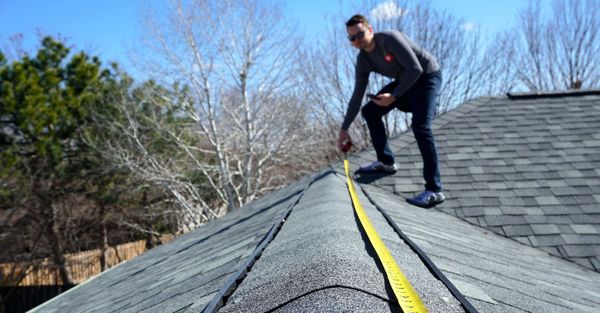Blog
Mastering the Spud Bar: A Roofer’s Best Friend for Commercial Tear-Offs
Mastering the Spud Bar: A Roofer’s Best Friend for Commercial Tear-Offs
Mastering the Spud Bar: A Roofer’s Best Friend for Commercial Tear-Offs
When it comes to commercial roofing tear-offs, speed, efficiency, and muscle matter. Among the arsenal of roofing tools, one that’s often underestimated — but absolutely essential — is the spud bar. This rugged, no-frills tool plays a critical role in removing old roofing materials, especially built-up roofs (BUR) and modified bitumen systems. Knowing how to use a spud bar correctly can save time, energy, and wear-and-tear on your power tools.
What Is a Spud Bar in Roofing?
A spud bar, sometimes called a roofing spud bar or roof scraper, is a heavy-duty steel bar with a flat, sharpened blade on one end and a long handle for leverage. It’s specifically designed to remove embedded roofing materials like asphalt, gravel, and tar, especially when those layers cling stubbornly to the roof deck.
In commercial roofing, this tool is used to “spud” — or scrape — the roof surface clean before new membrane installation. Think of it as the manual muscle behind surface prep.
How to Use a Spud Bar on a Commercial Roof
-
Prep the Area
Start by clearing loose debris and sweeping off gravel or ballast. For BUR systems, you may need to remove the top layer with a power roof cutter first. Once the top layers are out of the way, you’re ready to spud.
-
Angle and Pressure
Hold the spud bar with a firm grip — one hand on the handle’s top and the other near the midsection. Approach the old membrane at a low angle, keeping the blade almost flush with the roof surface. Apply downward pressure as you push the blade forward. The key is to let the blade “shave” off embedded material without gouging the deck.
-
Work in Sections
Spudding is physically demanding, so it’s best to work in smaller sections, especially on large commercial roofs. Focus on stripping each area clean of old tar, adhesives, or gravel-embedded layers. Rotate with your crew to avoid fatigue.
-
Sharpen Your Blade
A dull spud bar makes the job harder and increases the risk of injury. Keep the edge sharp with a grinder or file between uses to maintain maximum scraping power.
-
Safety First
Always wear gloves, eye protection, and steel-toe boots. Commercial roofing environments are full of slip hazards, and flying debris is common when spudding through hardened material.
Why It Matters
Proper spudding is critical for membrane adhesion. Leaving behind asphalt or gravel reduces the contact between the new roof and the deck, which can lead to premature failure. A clean, prepped surface means better longevity, stronger seals, and fewer callbacks — all of which boost your reputation as a pro roofer.
Final Thoughts
While it may not have a motor or a battery, the spud bar is one of the most reliable tools on any commercial roofing job. It’s simple, tough, and built for brutal work — just like the crews who use it. Master the spud bar, and you’ll master the tear-off.
For a look at some of our most popular spud bars, here is the 7" Spud Bar with ball handle.
Here is the 3 1/2" Spud bar with ball handle. And here is our hand spudder.
Mastering the Spud Bar: A Roofer’s Best Friend for Commercial Tear-Offs
Eric S
Mastering the Spud Bar: A Roofer’s Best Friend for Commercial Tear-Offs
When it comes to commercial roofing tear-offs, speed, efficiency, and muscle matter. Among the arsenal of roofing tools, one that’s often underestimated — but absolutely essential — is the spud bar. This rugged, no-frills tool plays a critical role in removing old roofing materials, especially built-up roofs (BUR) and modified bitumen systems. Knowing how to use a spud bar correctly can save time, energy, and wear-and-tear on your power tools.
What Is a Spud Bar in Roofing?
A spud bar, sometimes called a roofing spud bar or roof scraper, is a heavy-duty steel bar with a flat, sharpened blade on one end and a long handle for leverage. It’s specifically designed to remove embedded roofing materials like asphalt, gravel, and tar, especially when those layers cling stubbornly to the roof deck.
In commercial roofing, this tool is used to “spud” — or scrape — the roof surface clean before new membrane installation. Think of it as the manual muscle behind surface prep.
How to Use a Spud Bar on a Commercial Roof
Prep the Area
more
Manual vs. Electric Roofing Tools: Which is Best for Your Job?
Choosing the right tools is critical for any roofing project, whether you're a seasoned roofer, a DIY enthusiast, or a professional home flipper. At Roofing Tools Online, we provide a wide selection of roofing tools & equipment to meet your needs.
moreRoofing Tools ROI: Invest in Quality, Save Time & Money
At Roofing Tools Online, we understand that the right roofing tools and equipment are vital for any roofing project. Whether you're a DIY enthusiast or a seasoned contractor, investing in quality tools not only enhances your work's efficiency but also improves your overall return on investment (ROI). Choosing the best roofing tools can make the difference between a successful project and costly setbacks.
moreWhat Sets Roofing Tools Online Apart
In the ever-evolving world of roofing, having access to reliable and high-quality tools is essential for success. At Roofing Tools Online, we pride ourselves on providing the best roofing tools and equipment available in the market, ensuring that our customers can tackle their projects with confidence and expertise. But what truly sets us apart from the competition? Let's explore.
moreUnderstanding the Purpose and Proper Use of Different Tools
The roofing world is filled with specialized tools designed to make the job more efficient and safer. Understanding the purpose and proper use of different roofing tools is essential for both novice and experienced roofers. At Roofing Tools Online, we focus on providing you with the knowledge to select and utilize these tools effectively.
moreTop Four Tools for Professional Roofers
When it comes to roofing, having the right tools is crucial for delivering quality work efficiently. At Roofing Tools Online, we understand that professional roofers rely on a specific set of roofing tools & equipment to achieve desirable results. In this blog, we’ll highlight the top four tools every professional roofer should have in their arsenal, ensuring you have the best roofing tools for any project.
moreWelcome
Welcome to our site! We are in the process of building our blog page and will have many interesting articles to share in the coming months. Please stay tuned to this page for information to come. And if you have any questions about our business or want to reach out to us, we would love for you to stop by our contact page.
Thank you!
more





